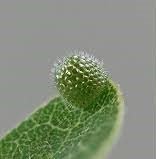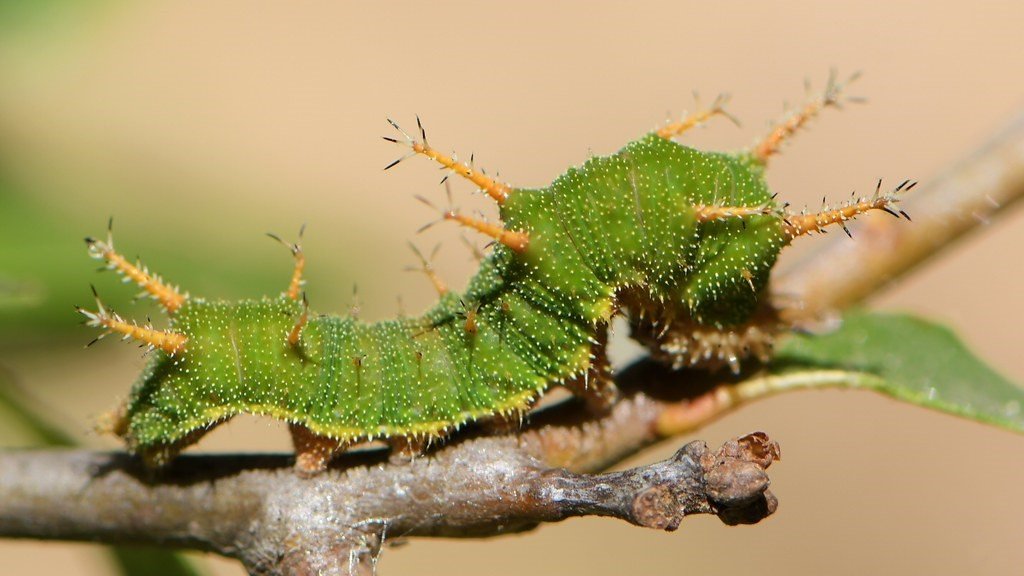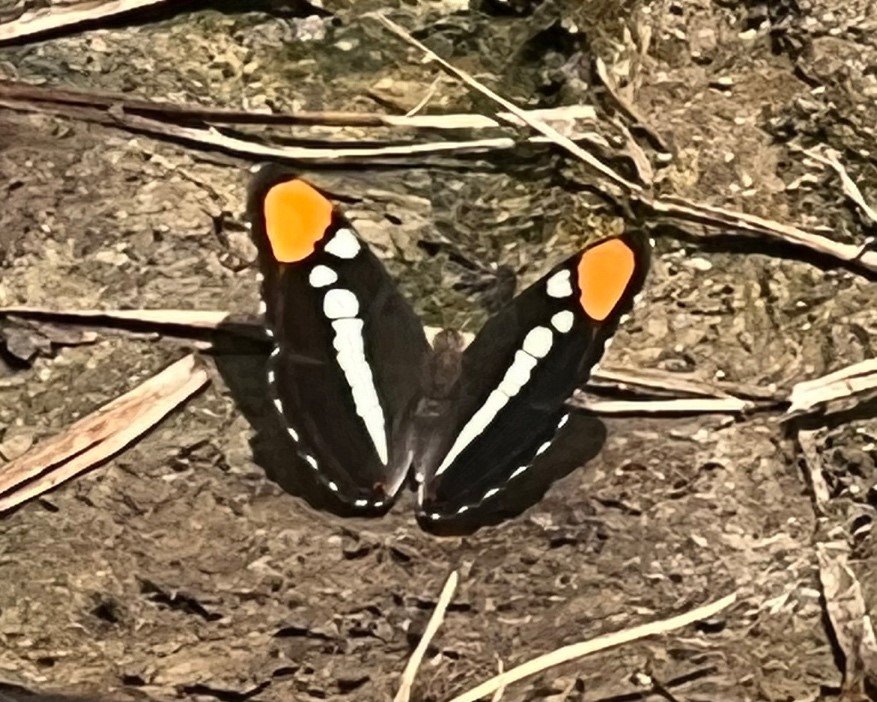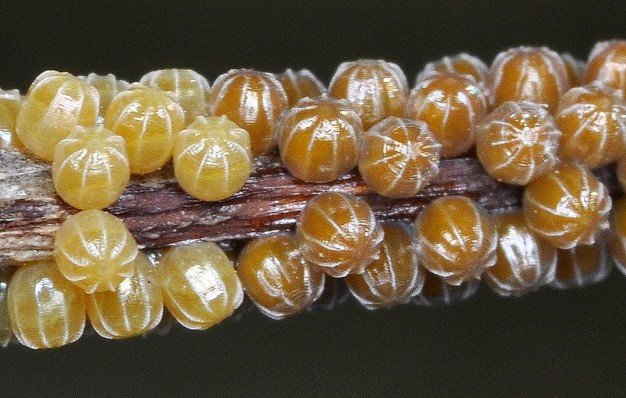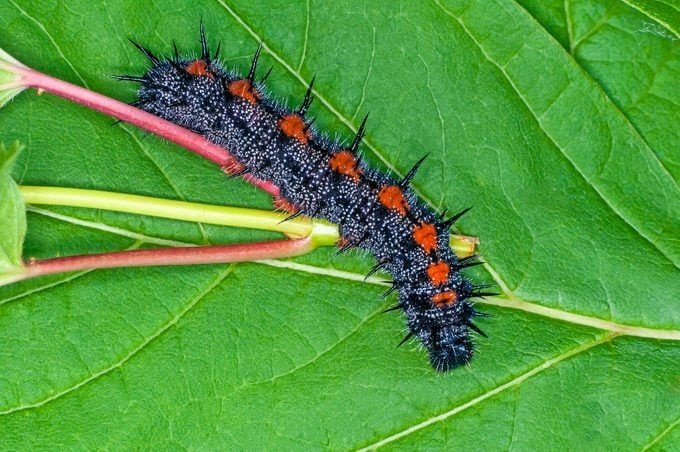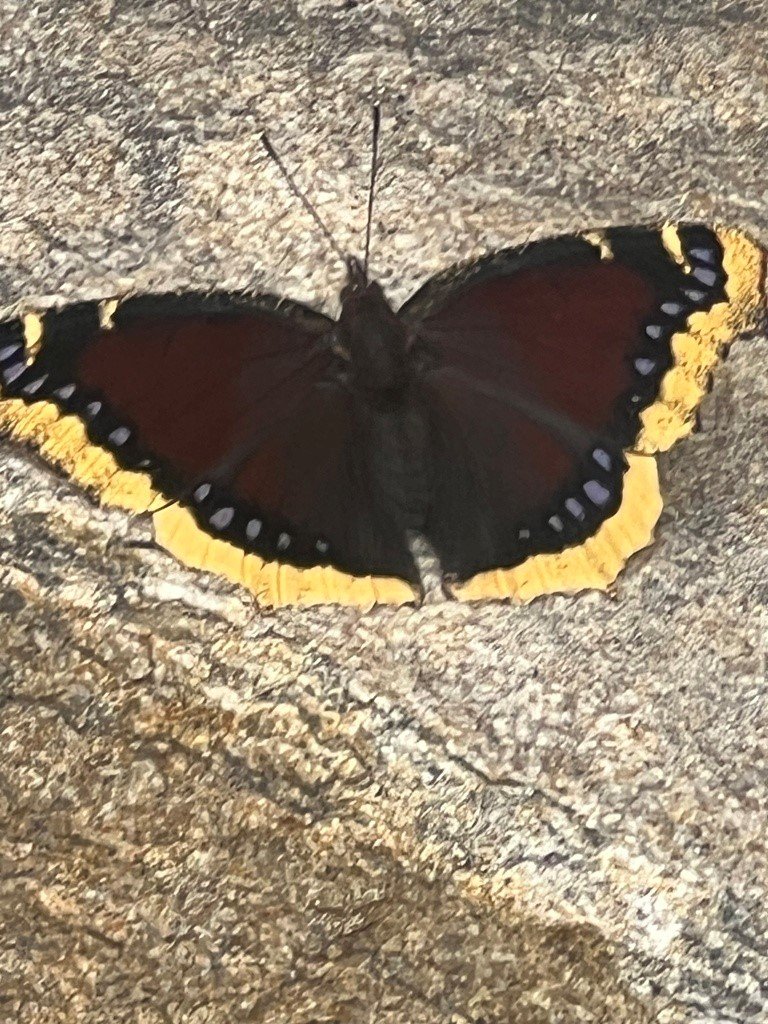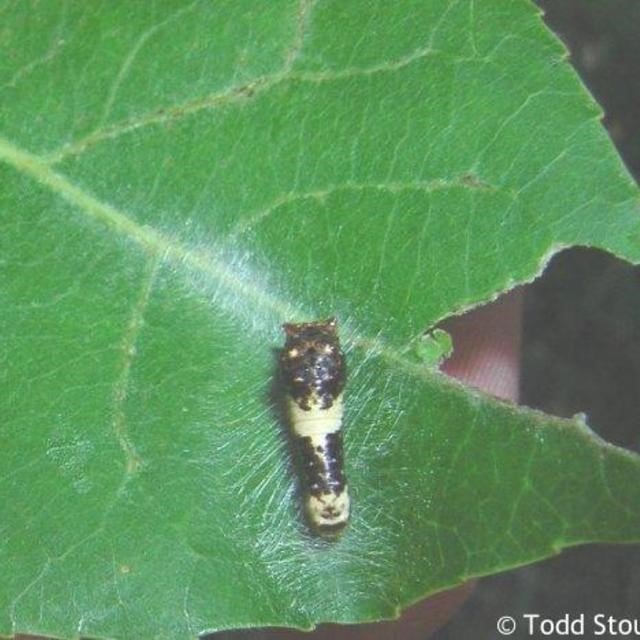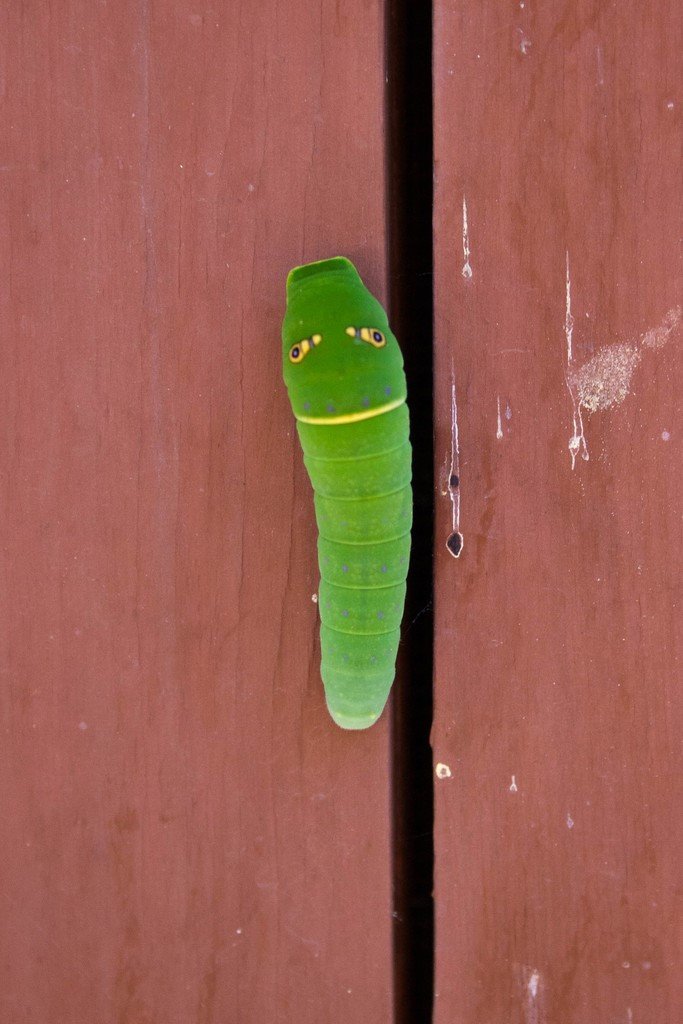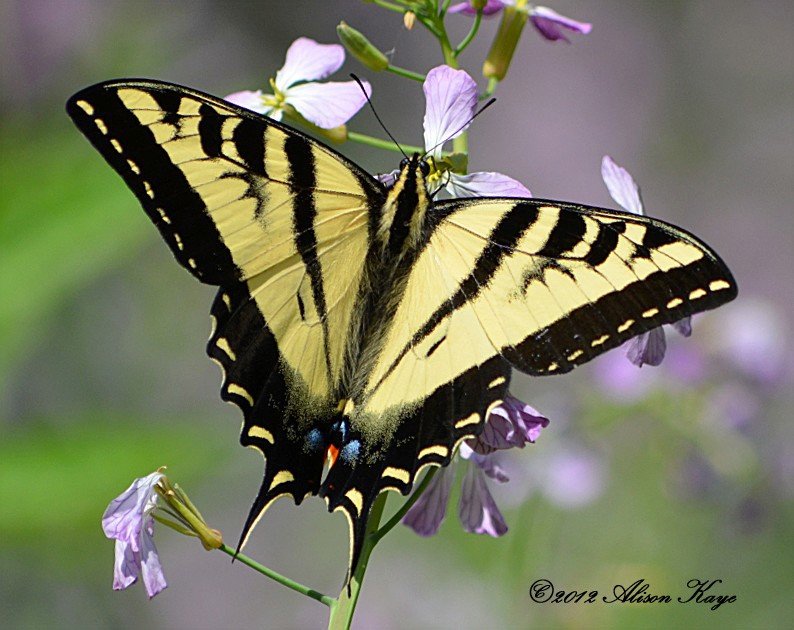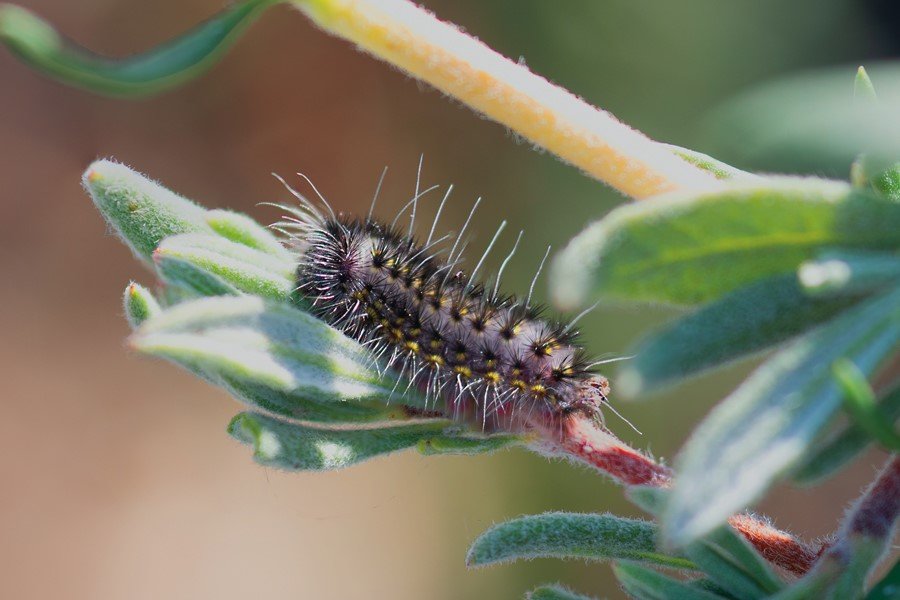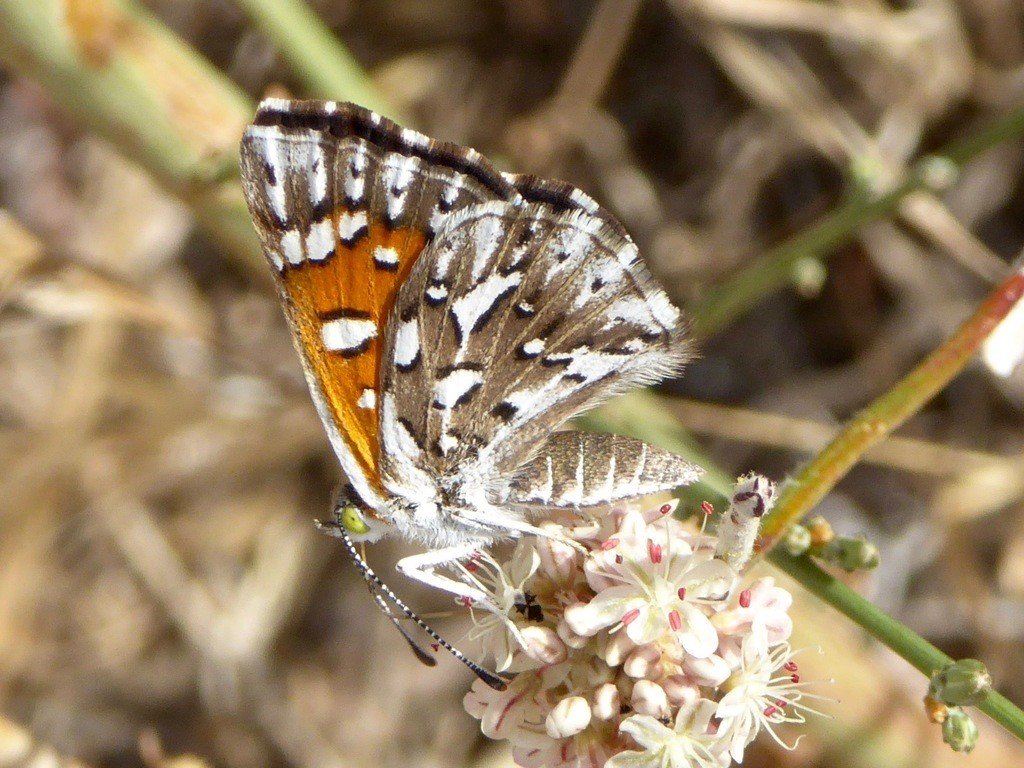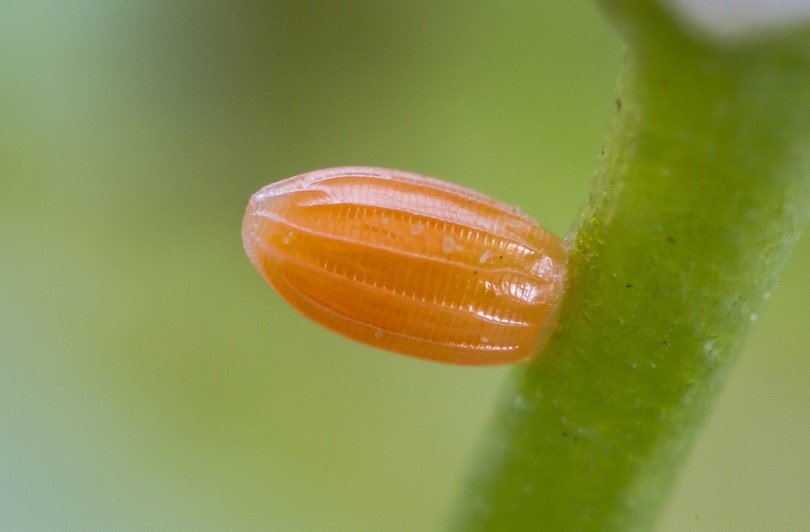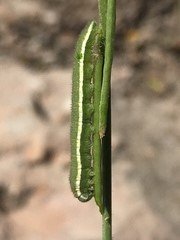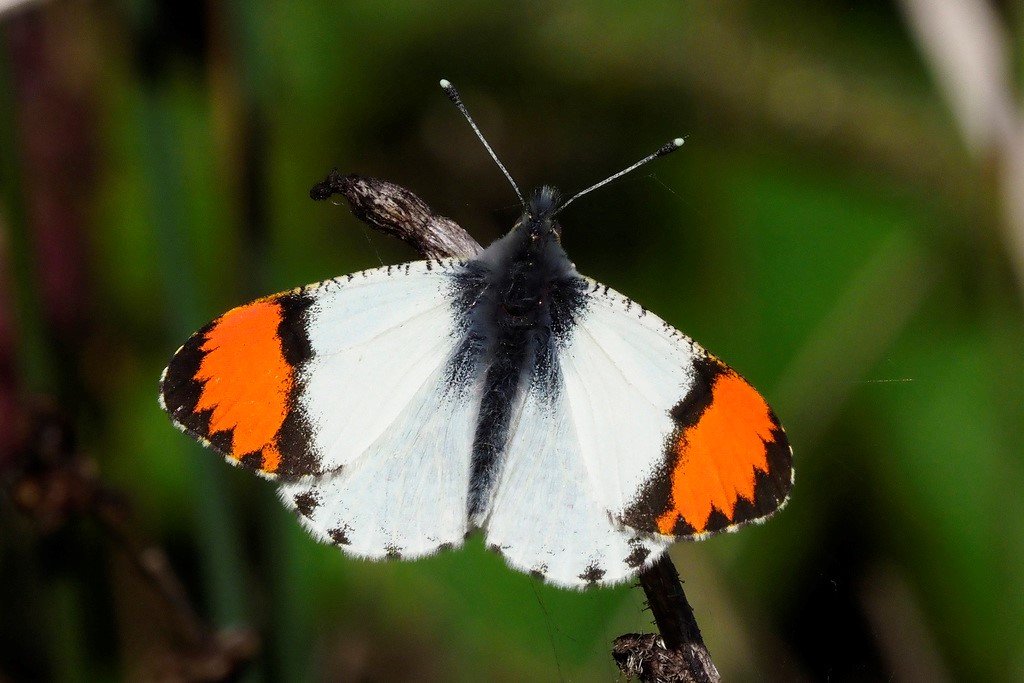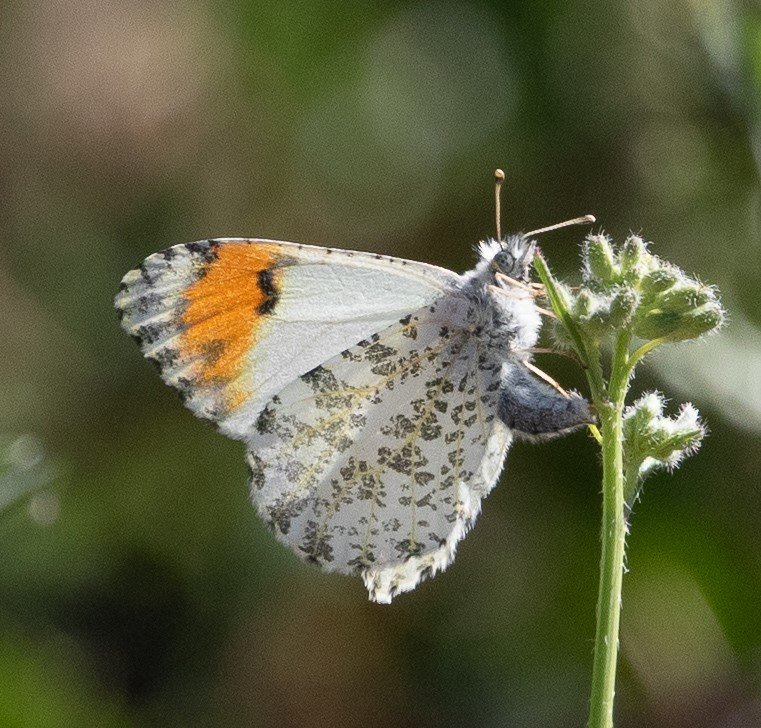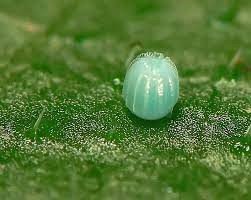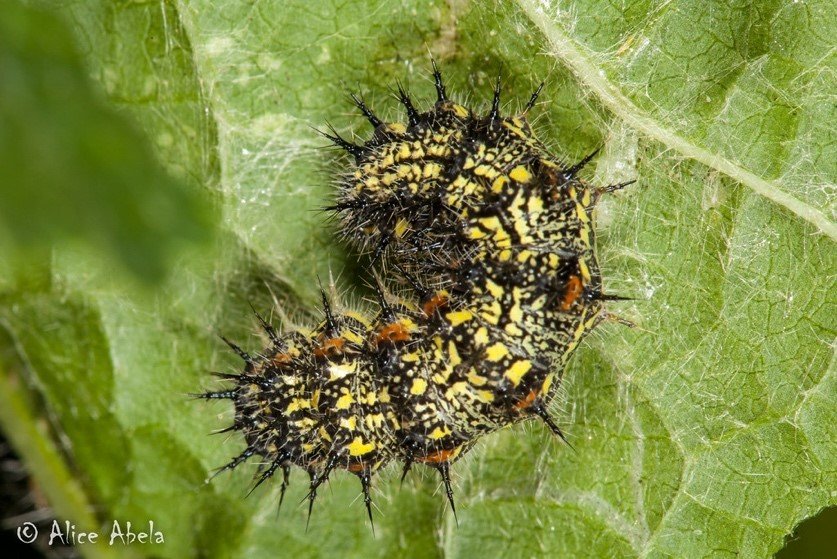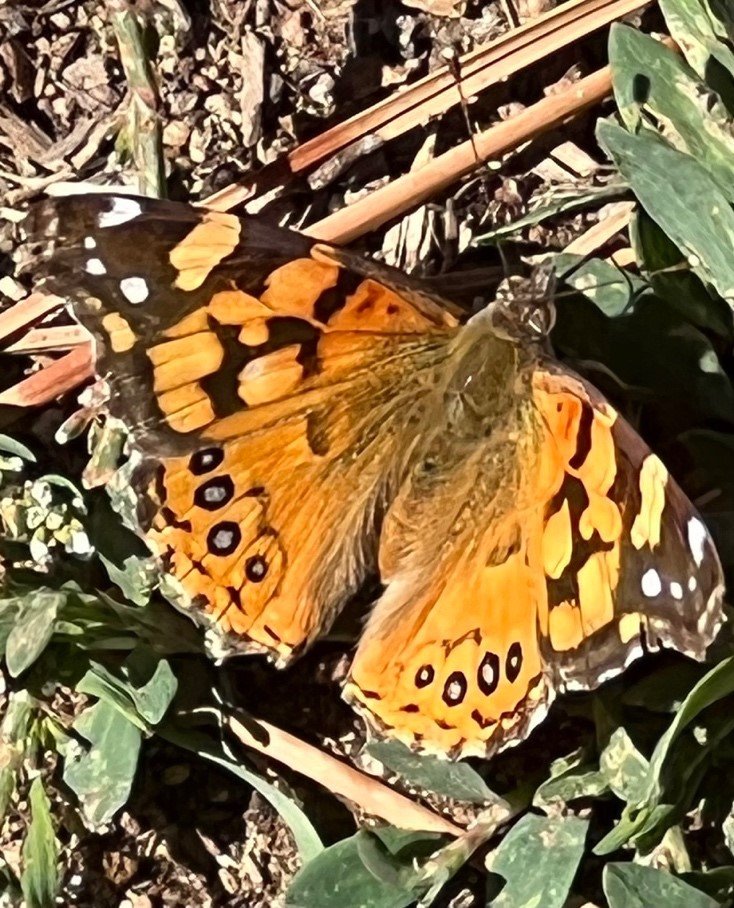Butterfly Facts
The larva (caterpillars) of each species of butterflies eat the leaves of only specific species of plants. Example: monarch caterpillars eat only milk weed leaves.
Adult butterflies have a liquid diet. Using their proboscis, which functions in the same way you or I might use a straw, butterflies drink nectar from flowers.
By traveling from flower to flower to feed, butterflies carry pollen and enable plants to reproduce.
Many butterflies can taste with their feet to find out whether the leaf they sit on is good to lay eggs on and be their caterpillars’ future food.
There are about 24,000 species of butterflies.
Different species of butterflies range in size from a tiny 1/8 inch to a huge almost 12 inches
California Sister (Adelpha californica)
California sister, is common in Blue Sky. The upper surfaces of their wings are dark brown to black with wide cream white bands dissecting both wings and two orange patches near the tips.
The eggs of California sister are green. They are laid singly on tips of oak leaves on the upper surface.
Their larvae (caterpillars) feed on the leaves of Oak Trees. This diet makes them unpalatable to predators.
Mourning Cloak (Nymphalis antiopa)
The mourning cloak butterfly is large, With a wingspan up to four inches. The dorsal side of its wings are a dark maroon with ragged pale-yellow edges. Bright, iridescent blue spots line the area between the maroon and the yellow.
Mourning cloak eggs are amber-yellow when first laid, eventually becoming almost black. They are laid encircling the stem, on plants whose leaves that will become the larvae’s food.
Upon hatching, the caterpillars will begin to eat the leaves of the plants, which in Blue Sky are willows and wild roses. They also eat elm leaves, which are not found in Blue Sky.
Western Tiger Swallowtail (Papilio rutulus)
At 4 inches, these are Blue Sky’s largest butterflies. Their wings are yellow with black stripes and blue and orange spots near their tails. They have the "tails" on the hindwings that are often found in swallowtails.
Females will lay green, shiny eggs on the underside of leaves on host plants where the larvae (caterpillars) will emerge to feed on the leaves. The common host plants for their caterpillars are sycamores, willows, alders, and cottonwoods.
Young caterpillars resemble bird droppings and as they molt, they eventually turn bright green, with a pair of large yellow eyespots with black and blue pupils.
Behr's Metalmark (Apodemia virgulti)
This small species (1 in.) is Blue Sky’s most common butterfly. Its upper side is red-brown to black, checkered with black and white spots. It has a brick-red patch on its forewing. Their name refers to the small, golden or silvery, metallic-looking spots commonly found on their wings.
The caterpillar of Behr’s Metalmark eats leaves of its host, California buckwheat (Eriogonum fasciculatum), which is very common in Blue Sky.
Sara Orangetip (Anthocharis sara)
The upper side of the male forewing has a large, orange-red spot with a dark, narrow border. The female spot is smaller with a dark border with white wedges. The underside of the hindwing exhibits scattered dark-green marbling.
Their eggs are orange in color. The eggs are laid on the stems, pedicels, and the bases of petioles of their host plants.
When the larvae emerge, the caterpillars eat the buds, flowers, and fruits of plants in the mustard family.
West Coast Lady (Vanessa annabella)
The upper side of the butterfly is orange-brown with an orange bar at the leading edge of the forewing. The hindwing has 3 or 4 blue submarginal spots. Its wingspan: is1 1/2 - 2 1/4 inches.
Their eggs are green in color, are laid on leaves of their host plants.
Their larvae (caterpillars) feed on the leaves of mallows and nettles in Blue Sky.
Text and most pictures courtesy of Al Torretto.


